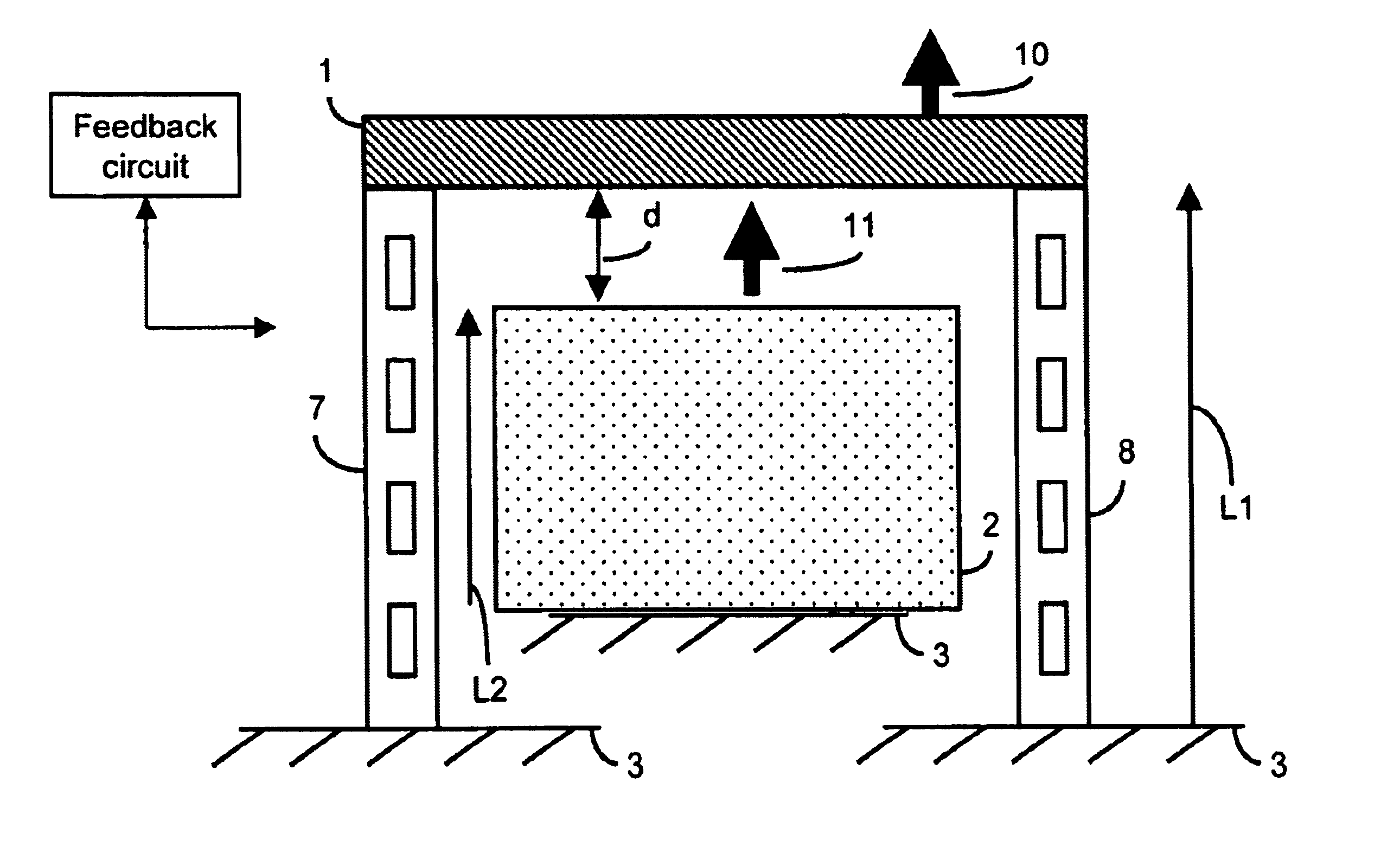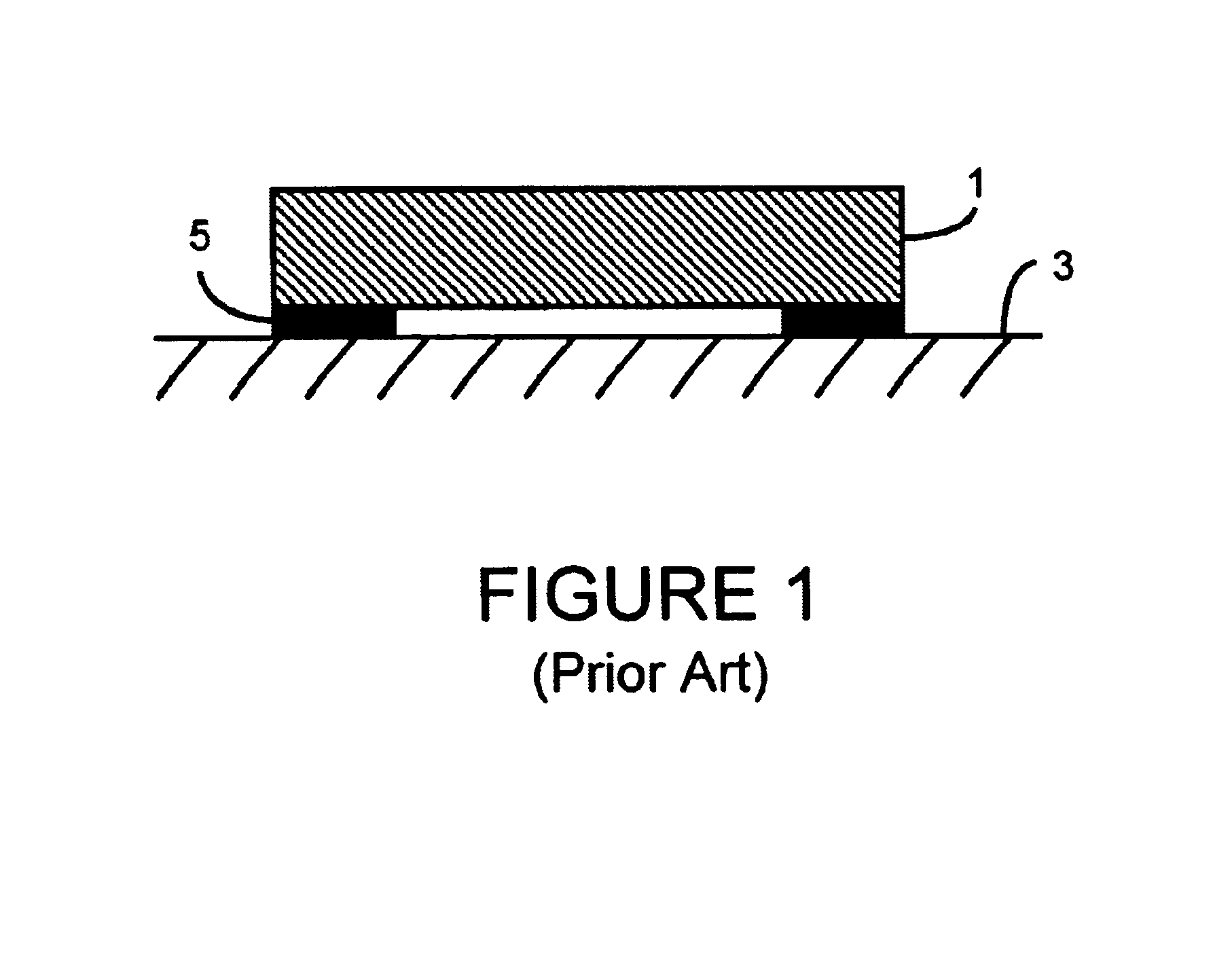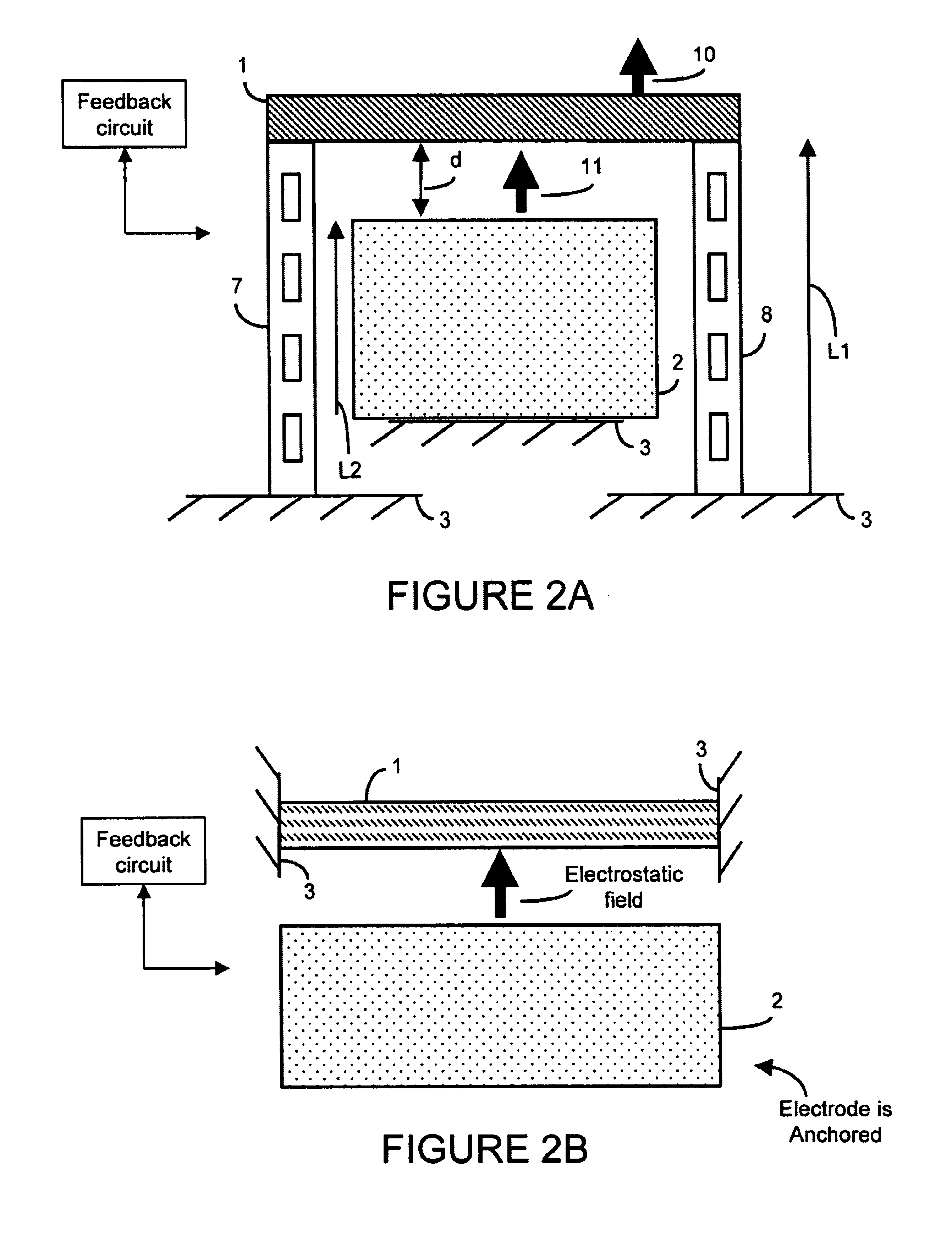Temperature compensation for silicon MEMS resonator
a technology of silicon mems and resonators, applied in the field of microelectromechanical systems, can solve problems such as s modulus, putative mems designers face a considerable challenge, and not normally be the cas
- Summary
- Abstract
- Description
- Claims
- Application Information
AI Technical Summary
Benefits of technology
Problems solved by technology
Method used
Image
Examples
Embodiment Construction
[0040]The description that follows presents several design possibilities, methods, and / or mechanical structures in surface micromachining, whereby thermally induced frequency changes in a micromechanical resonator may be remedied. According to the present invention, semiconductor compatible materials are highly preferred in the fabrication of such resonators.
[0041]Throughout the description that follows, semiconductor compatible materials are presumed in the teaching examples. This materials bias is understandable given the contemporary emphasis in CMOS integration of micromechanical structures. However, materials incompatible with such designs may also be used, albeit with fewer current design advantages. Compatible materials are not limited to silicon or silicon-based compositions, but include all materials capable of being fabricated by conventional integrated circuit techniques and / or integrated upon a semiconductor substrate. As presently preferred, resonators according to the ...
PUM
| Property | Measurement | Unit |
|---|---|---|
| frequency | aaaaa | aaaaa |
| resonance frequency | aaaaa | aaaaa |
| operating frequency | aaaaa | aaaaa |
Abstract
Description
Claims
Application Information
 Login to View More
Login to View More - R&D
- Intellectual Property
- Life Sciences
- Materials
- Tech Scout
- Unparalleled Data Quality
- Higher Quality Content
- 60% Fewer Hallucinations
Browse by: Latest US Patents, China's latest patents, Technical Efficacy Thesaurus, Application Domain, Technology Topic, Popular Technical Reports.
© 2025 PatSnap. All rights reserved.Legal|Privacy policy|Modern Slavery Act Transparency Statement|Sitemap|About US| Contact US: help@patsnap.com



